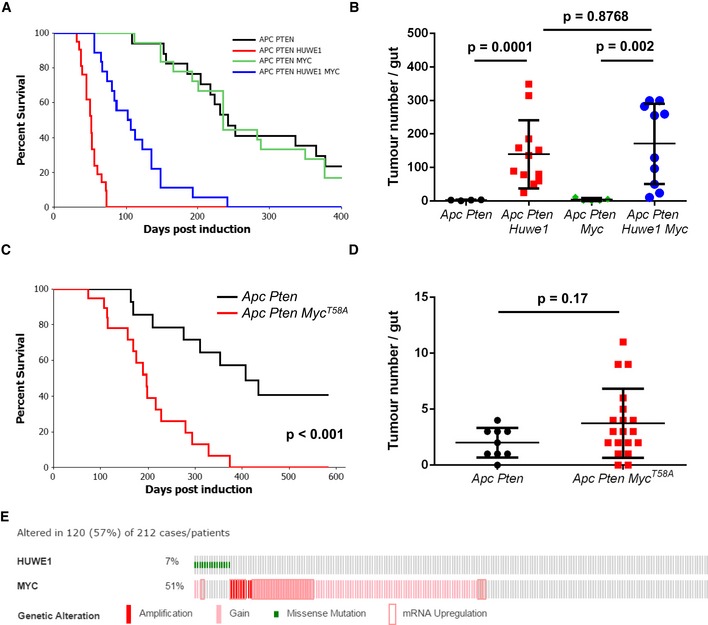Kaplan–Meier survival plot of cohorts of induced Vil Apc Pten, Vil Apc Pten Huwe1, Vil Apc Pten Myc and Vil Apc Pten Huwe1 Myc mice. Heterozygous deletion of Myc led to a specific and significant increase in survival of Huwe1‐deleted animals (Vil Apc Pten Huwe1 versus Vil Apc Pten Huwe1 Myc, log rank, P < 0.001, n ≥ 16).
Quantification of total tumour numbers per gut in sacrificed Vil Apc Pten, Vil Apc Pten Huwe1, Vil Apc Pten Myc and Vil Apc Pten Huwe1 Myc mice. Heterozygous deletion of Myc did not reduce the number of tumours in Huwe1‐deleted mice (Vil Apc Pten Huwe1 versus Vil Apc Pten Huwe1 Myc, Mann–Whitney, n ≥ 10). Data plotted are mean and SD.
Kaplan–Meier survival plot of cohorts of induced AhCre‐ER
T
Apc Pten and AhCre‐ER
T
Apc Pten Myc
T58A mice. Overexpression of proteolytically stabilised MYC led to a significant reduction in survival (log rank, P < 0.001, n = 14 versus 21).
Quantification of total tumour numbers per gut in sacrificed Apc Pten and Apc Pten Myc
T58A mice. Overexpression of proteolytically stabilised MYC did not increase the number of tumours in Apc Pten mice (Mann–Whitney, n = 9 versus 19). Data plotted are mean and SD.
cBioportal OncoPrint showing mutual exclusivity of HUWE1 mutations and increased MYC copy number and/or RNA expression in CRC samples (log odds ratio: −1.144 [some tendency towards mutual exclusivity], P = 0.042).

